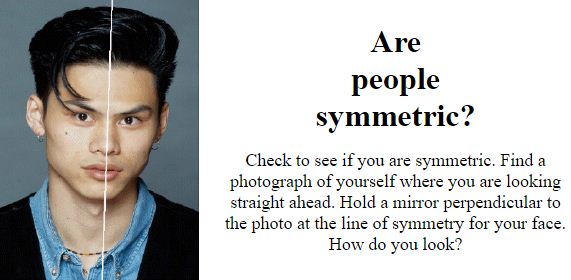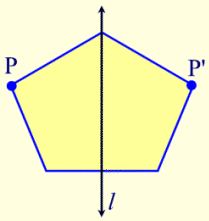How do you find Lines of Symmetry?
Line Symmetry
A figure has a line symmetry if there is a line about which the figure may be folded so that the two parts of the figure will coincide. All objects and all alphabets below figure have line symmetry.
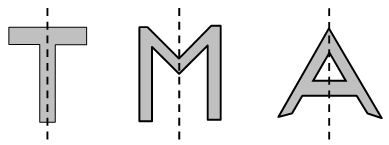 The concept of line symmetry is closely related to mirror reflection.
The concept of line symmetry is closely related to mirror reflection.
 Note :
Note :
If one half completely covers the other, we say that the line is the line of symmetry otherwise not.
Examples:
- Let PQRS be a kite in which PQ = PS and QR = SR.
Then kite PQRS is symmetrical about diagonal PR.
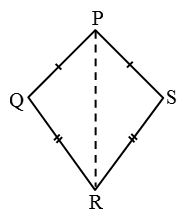
- A rectangle has two lines of symmetry, each one of which is the line joining the mid point of opposite sides.
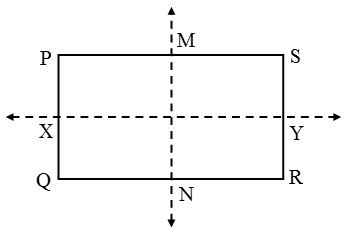
- A semicircle has one line of symmetry, namely the perpendicular bisector of diameter PQ.
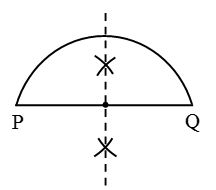
- A circle is symmetrical about each one of its diameters.

- An equilateral triangle is symmetrical about each one of the bisectors of its interior angles.
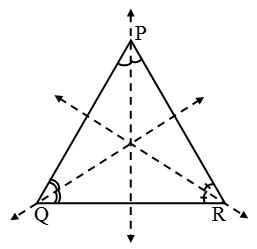
- A square has 4 lines of symmetry, namely the diagonals and lines joining the mid-points of its opposite sides.
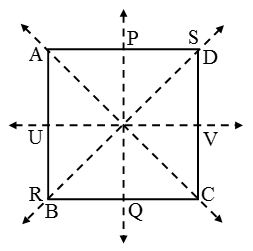
- A rhombus is symmetrical about each of its diagonals.
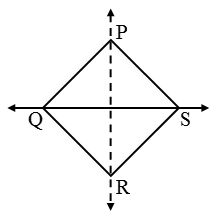
Line of symmetry in regular polygons
Regular Polygon
A closed figure bounded by straight line segments of equal length is called a Regular Polygon. For example, a square is a regular quadrilateral figure.
 Let us now discuss a method of finding lines of symmetry of a regular polygon.
Let us now discuss a method of finding lines of symmetry of a regular polygon.
1. An Equilateral Triangle
A triangle whose all sides are of same length and each of its angles measures 60°, is called an equilateral triangle shown in figure.
 2. A Square
2. A Square
We have already discussed that a square is also a regular polygon because its all sides are of equal length and each of its angles is a right angle (of measure 90°) as in figure.
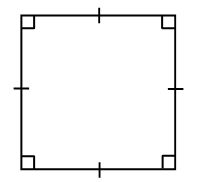 3. A Regular Pentagon
3. A Regular Pentagon
A figure bounded by five sides of equal length is called a regular pentagon. Each angle of a regular pentagon is 108°.
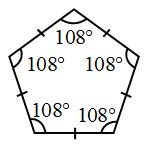 4. A Regular Hexagon
4. A Regular Hexagon
A figure bounded by six sides of equal length is called a regular hexagon. Each of its angle measures 120°.
 Trace an equilateral triangle on a tracing paper and find its lines of symmetry by folding.
Trace an equilateral triangle on a tracing paper and find its lines of symmetry by folding.
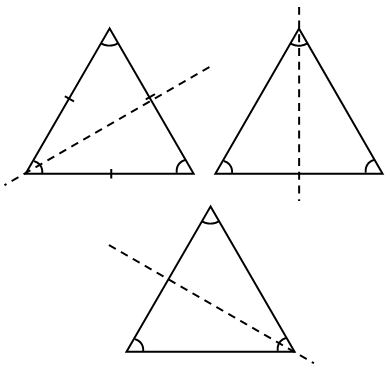 there are three lines of symmetry for an equilateral triangle.
there are three lines of symmetry for an equilateral triangle.
Draw a square on a tracing paper.
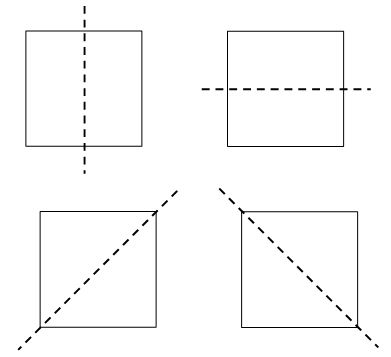 A square has four lines of symmetry.
A square has four lines of symmetry.
 Note :
Note :
- We can also find the line of symmetry of a figure by putting a mirror. When the half part of a figure becomes same as its mirror image, we call the line along with mirror as the line of symmetry.
- In mirror reflection, the orientation of the figure changes into left-right orientation as shown in figure.
 The white line is the line of symmetry.
The white line is the line of symmetry. The black lines are the line of symmetry.
The black lines are the line of symmetry.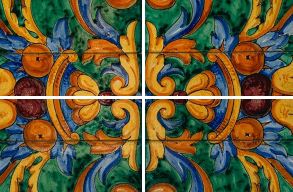
 The pink line is the line of symmetry.
The pink line is the line of symmetry.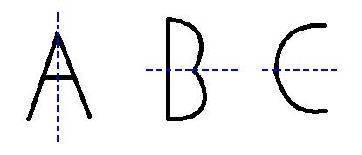 Notice that some letters possess vertical line symmetry, some possess horizontal line symmetry, and some possess BOTH vertical and horizontal line symmetry.
Notice that some letters possess vertical line symmetry, some possess horizontal line symmetry, and some possess BOTH vertical and horizontal line symmetry.
